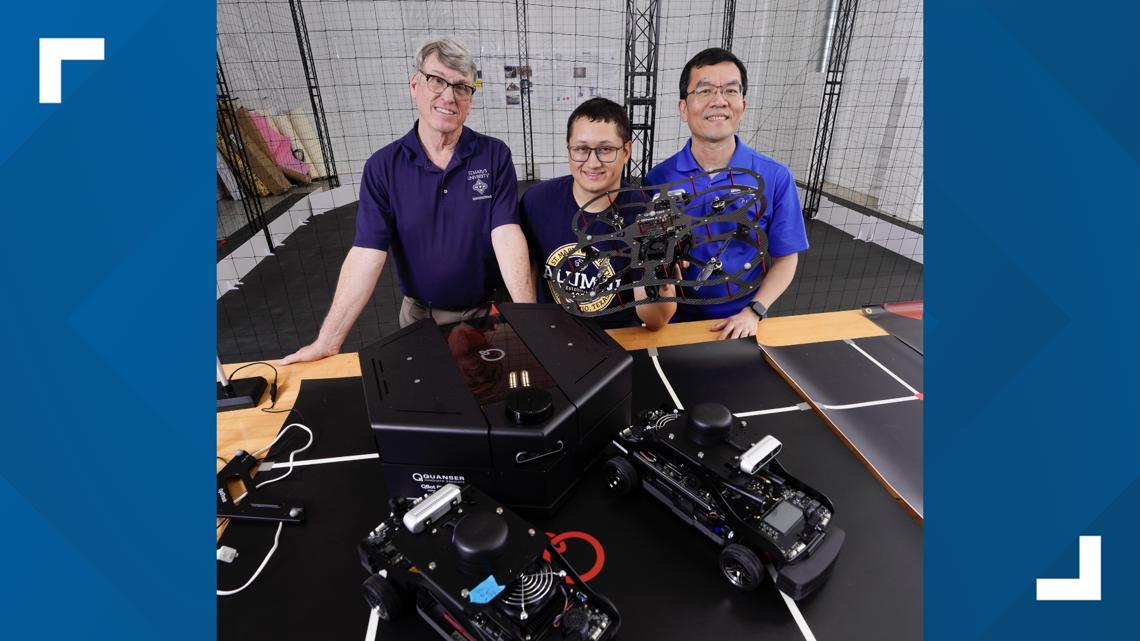
The St. Mary’s University team works to develop real-time cybersecurity tools to protect AI systems from cyber threats.
SAN ANTONIO — With cyberattacks evolving beyond computers to target vehicles, hospitals and critical infrastructure, professors at St. Mary’s University are stepping in to protect the future of artificial intelligence.
Backed by a $340,000 grant from the U.S. Department of Defense, the university is using cutting-edge drones, robots and miniature autonomous vehicles to develop real-time cybersecurity tools.
The initiative is led by Professor of Computer Engineering Wenbin Luo and his team inside the university’s Drone Lab. Their research focuses on creating AI systems that can detect and defend against cyber threats before any damage occurs—both digitally and physically.
“For this grant it will help us to do research, in strengthening the cybersecurity for the AI-based… systems like autonomous vehicles,” Luo said.
Unlike traditional hacking, these attacks—known as cyber-physical threats—can cause real-world harm by disrupting how machines perceive or react to their environment.
Luo explained that a vehicle’s data could be manipulated, potentially leading to life-threatening situations.
“This kind of attack… the goal of the attacker is not only to steal the data, but also cause a physical harm,” he said.
The team is building an AI-driven intrusion detection system that can not only recognize when a system is under attack—but also respond to neutralize the threat.
“Our goal is to… tell when the vehicle is under attack… and also let the vehicle mitigate this kind of attack,” Luo added.
Students are playing a key role in the research. Electrical engineering student Joshua Rogers joined the project through a work-study opportunity and is now part of a growing team working on communication and system security.
“Hopefully I can create a system that is very efficient, and very stable with the communication between the host and the receiver,” Rogers said.
The professors hope the program will also inspire the next generation of STEM students and increase awareness of AI’s role in everyday life. The university plans to use the equipment not only for research but also as a teaching and outreach tool.
As AI technology rapidly becomes more integrated into critical infrastructure, the research happening at St. Mary’s University could play a key role in helping protect our roads, hospitals and power systems from the next wave of cyber threats.
